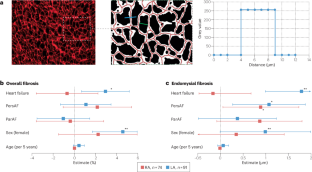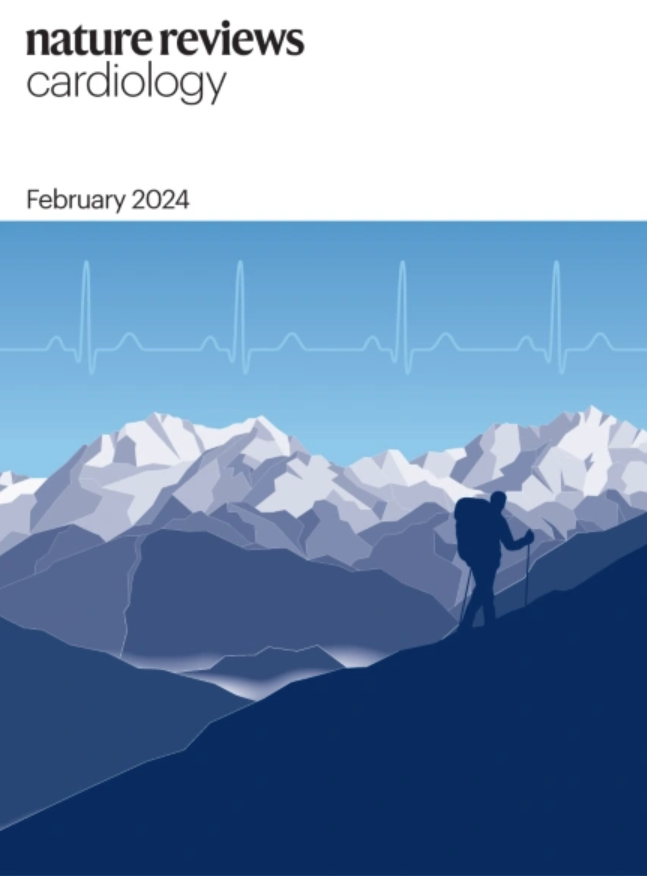将心房纤维化的病理生理机制转化为新的诊断和治疗方法
IF 44.2
1区 医学
Q1 CARDIAC & CARDIOVASCULAR SYSTEMS
引用次数: 0
摘要
心房纤维化是心房心肌病的主要表现之一,心房心肌病是与心房颤动(房颤)、中风和心力衰竭相关的一系列电气、机械和结构改变。心房纤维化既可能是心房颤动的原因,也可能是心房颤动的结果,一旦出现,就会加速心房颤动的发展。导致心房纤维化的病理生理机制多种多样,包括拉伸引起的成纤维细胞激活、全身炎症过程、凝血因子激活和纤维脂肪浸润。重要的是,心房纤维化可以以不同的形式出现,如反应性纤维化和替代性纤维化。心房纤维化机制和模式的多样性取决于性别、年龄和合并症情况,这阻碍了治疗策略的开发。此外,合并症的存在和严重程度往往会随着时间的推移而发生变化,从而可能导致心房纤维化发生机制的时空变化。本综述总结了有关心房纤维化的分子和细胞机制、其与合并症的关系以及性别差异的最新知识。我们描述了心房纤维化的各种模式如何转化为促进房颤的电生理机制,并对量化心房纤维化的诊断工具的临床适用性和局限性进行了批判性评估。最后,我们概述了正在开发的最新治疗干预措施,并讨论了与心房纤维化的临床表现和病理机制之间的关联以及将这些知识转化到临床环境中的相关知识差距。本文章由计算机程序翻译,如有差异,请以英文原文为准。


Translation of pathophysiological mechanisms of atrial fibrosis into new diagnostic and therapeutic approaches
Atrial fibrosis is one of the main manifestations of atrial cardiomyopathy, an array of electrical, mechanical and structural alterations associated with atrial fibrillation (AF), stroke and heart failure. Atrial fibrosis can be both a cause and a consequence of AF and, once present, it accelerates the progression of AF. The pathophysiological mechanisms leading to atrial fibrosis are diverse and include stretch-induced activation of fibroblasts, systemic inflammatory processes, activation of coagulation factors and fibrofatty infiltrations. Importantly, atrial fibrosis can occur in different forms, such as reactive and replacement fibrosis. The diversity of atrial fibrosis mechanisms and patterns depends on sex, age and comorbidity profile, hampering the development of therapeutic strategies. In addition, the presence and severity of comorbidities often change over time, potentially causing temporal changes in the mechanisms underlying atrial fibrosis development. This Review summarizes the latest knowledge on the molecular and cellular mechanisms of atrial fibrosis, its association with comorbidities and the sex-related differences. We describe how the various patterns of atrial fibrosis translate into electrophysiological mechanisms that promote AF, and critically appraise the clinical applicability and limitations of diagnostic tools to quantify atrial fibrosis. Finally, we provide an overview of the newest therapeutic interventions under development and discuss relevant knowledge gaps related to the association between clinical manifestations and pathological mechanisms of atrial fibrosis and to the translation of this knowledge to a clinical setting. In this Review, Schotten and colleagues summarize the latest knowledge on the molecular and cellular mechanisms of atrial fibrosis, describe the electrophysiological manifestations of atrial fibrosis, critically appraise the diagnostic tools to quantify atrial fibrosis, discuss emerging therapeutic interventions, and highlight knowledge gaps and future research directions.
求助全文
通过发布文献求助,成功后即可免费获取论文全文。
去求助
来源期刊

Nature Reviews Cardiology
医学-心血管系统
CiteScore
53.10
自引率
0.60%
发文量
143
审稿时长
6-12 weeks
期刊介绍:
Nature Reviews Cardiology aims to be the go-to source for reviews and commentaries in the scientific and clinical communities it serves. Focused on providing authoritative and accessible articles enriched with clear figures and tables, the journal strives to offer unparalleled service to authors, referees, and readers, maximizing the usefulness and impact of each publication. It covers a broad range of content types, including Research Highlights, Comments, News & Views, Reviews, Consensus Statements, and Perspectives, catering to practising cardiologists and cardiovascular research scientists. Authored by renowned clinicians, academics, and researchers, the content targets readers in the biological and medical sciences, ensuring accessibility across various disciplines. In-depth Reviews offer up-to-date information, while Consensus Statements provide evidence-based recommendations. Perspectives and News & Views present topical discussions and opinions, and the Research Highlights section filters primary research from cardiovascular and general medical journals. As part of the Nature Reviews portfolio, Nature Reviews Cardiology maintains high standards and a wide reach.
 求助内容:
求助内容: 应助结果提醒方式:
应助结果提醒方式:


